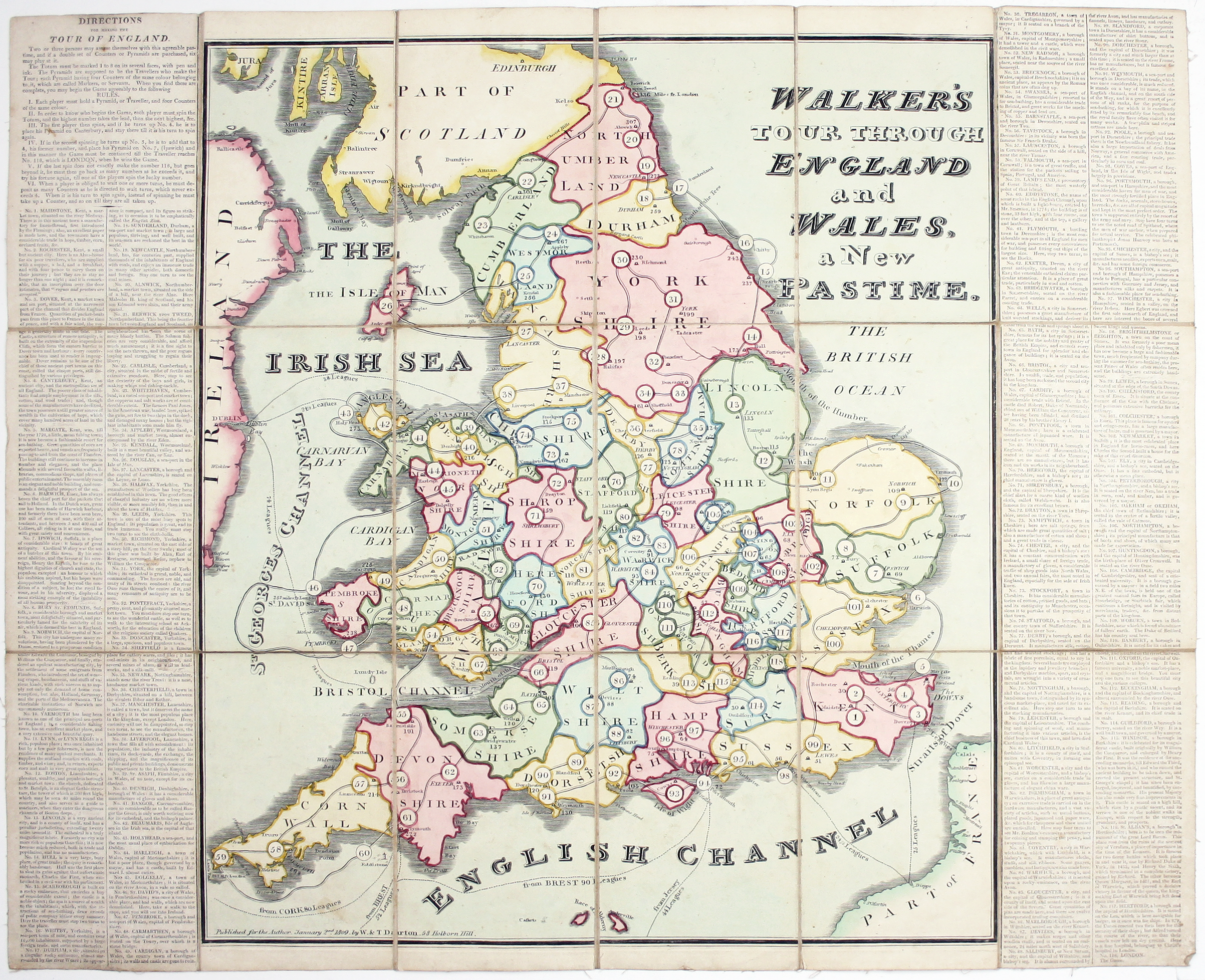
Walker’s Tour Through England & Wales
SKU: 9409
Title:
Walker’s Tour Through England & Wales
Date of publication:
Printed Measurement:
Colour:
A New Geographical Pastime: Walker’s Tour through England and Wales
Most games of this nature were educational, and in this case players learn as they ‘visit’ towns and cities by racing through the country and reading the paragraph written for each stop around the margins of the board. There are strong similarities with Wallis’ ‘Tour through England and Wales’ which appeared in 1794, although players follow a different route and there is considerable variation in stops (which here include Eddystone Lighthouse, off the coast). There is a marked absence of ‘snakes and ladders’ gameplay (which appears in Wallis’ Tour), which may have been considered too frivolous, and the only forfeits are missed turns. Read more
The Dartons were Quakers (William Darton senior joined the Society of Friends in 1777), which occasionally shows in the game. Any player landing on Pontefract misses a turn ‘to walk to the interesting school at Ackworth’ a Quaker boarding school founded in 1779; visiting Newmarket, we learn that horse-racing is a ‘cruel diversion’. William Darton junior and his son Thomas worked together between 1806 and June 1810, and both are included in the imprint on the map. A tour through Europe was published as a companion game in 1810. both games were authored by John Walker.
Walker was an engraver, geographer and physician, an associate of Tom Paine and an exponent of many radical causes (he evidently got on well with the Dartons). He served as a doctor with the British army during the Egyptian campaign against Napoleon, and became a champion for the controversial new science of vaccination. In later life he claimed to have vaccinated over 100,000 people.
Condition & Materials
Engraved cartographic table-game, 53 x 66 cm, dissected into 18 panels and laid on linen, original hand colour, two columns of rules and town descriptions to left and right margins; folding into publisher’s card slipcase, worn, printed label to upper cover. Read less


